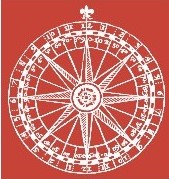Courtship and the Hill of Truth: Religion, Career, and the Purification of Motives in Donne's Satyres and Sermons
Cet article se propose d’examiner comment Donne, dans sa «Satyre III», manipule l’amour pour l’Être divin par l’intermédiaire de la «hill of Truth». L’article tente aussi de démontrer en quoi cette image constitue le centre symbolique des satires de…
তালিকাভুক্ত Article | গোষ্ঠী দ্বারা প্রকাশনা Iter Community
সংস্করণ 1.0 - প্রকাশিত উপরে 08 Jul 2025
লাইসেন্সকৃত Creative Commons BY-NC 4.0
বর্ণনা
Cet article se propose d’examiner comment Donne, dans sa «Satyre III», manipule l’amour pour l’Être divin par l’intermédiaire de la «hill of Truth». L’article tente aussi de démontrer en quoi cette image constitue le centre symbolique des satires de l’auteur et une solution au problème du dévouement sociopolitique décrit dans les quatre poèmes. La fonction rhétorique de l’ascension saute aux yeux dans les sermons, où Donne attise avec méthode le désir et l’ambition pour diriger les auditeurs vers l’amour de l’Être divin.
এই কাজটি উদ্ধৃত করুন
গবেষকদের এই কাজটি উদ্ধৃত করতে নিম্নলিখিতভাবে উল্লেখ করতে হবে:
ট্যাগ
নোটস
Original publication: Nelson, Brent L. "Courtship and the Hill of Truth: Religion, Career, and the Purification of Motives in Donne's Satyres and Sermons." Renaissance and Reformation 39 (4): 2020. 5-29. DOI: 10.33137/rr.v39i4.8917. This material has been re-published in an unmodified form on the Canadian HSS Commons with the permission of Iter Canada / Renaissance and Reformation. Copyright © the author(s). Their work is distributed by Renaissance and Reformation under a Creative Commons Attribution-NonCommercial 4.0 International License. For details, see https://creativecommons.org/licenses/.
প্রকাশনা প্রাকদর্শন
Iter Community
This publication belongs to the Iter Community group.
When watching a publication, you will be notified when a new version is released.
